Here comes the comparison of two popular brands of air purifier manufacturers. As you may have read so far in my reviews, Blueair is a company focused on producing only air purifiers, which ensured them a strong position and a good reputation on the market.
On the other hand, Xiaomi is a worldwide recognizable brand with a variety of products in different branches.
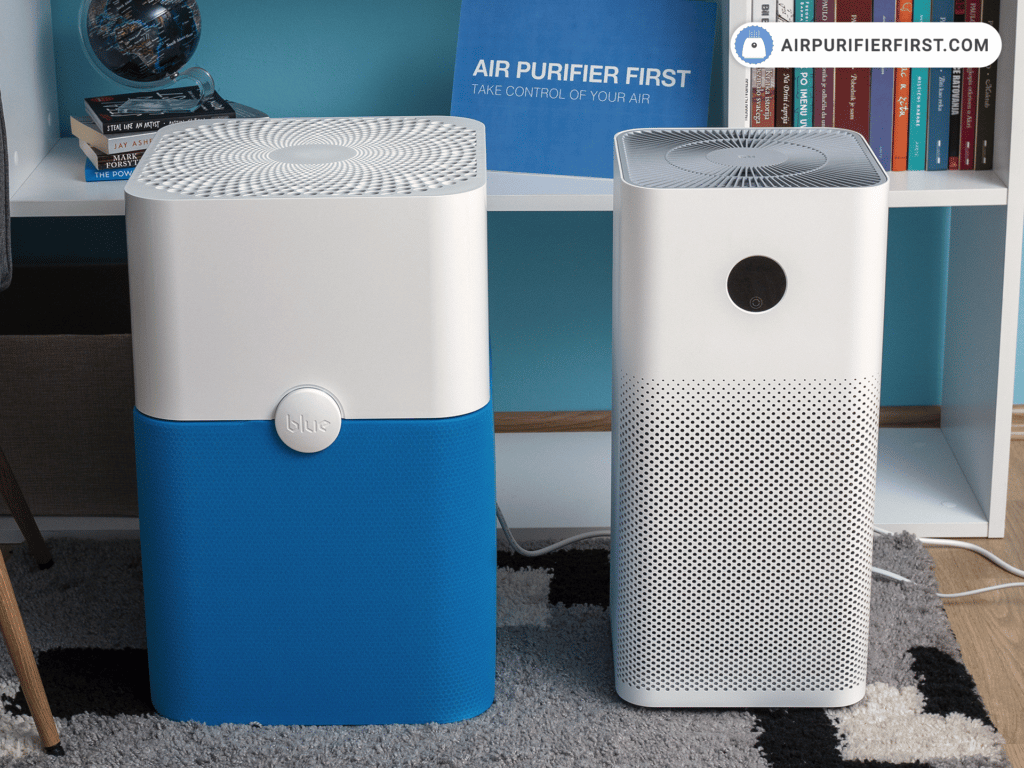
Table of Contents
As for the quality of the manufacturing material, I must say both air purifiers are more than satisfying. With the Xiaomi Mi 3H, you will get a solid plastic air purifier, while with Blueair 211+, you will get a combination of plastic and metal parts. None of the appliances look cheap, I can tell you for sure. Both devices come in plain white color, yet Blueair has a fibrous pre-filter in the form of a fabric you put on the air purifier. This fabric is available in various colors, which makes it adjustable to any interior decor.
Speaking of the interior, you should know that Xiaomi Mi 3H can cover up to 484 sq. ft. of space, while Blueair covers slightly bigger areas, up to 540 sq. ft.
What I can tell you right from the start, this will be an interesting comparison. Not only will it be about two equally powerful air purifiers but also about how two contrasting appliances can achieve great results.
Xiaomi Vs Blueair Specifications
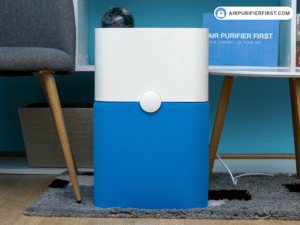 |
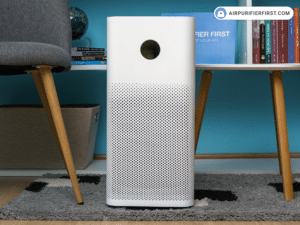 |
|
| Manufacturer | Blueair | Xiaomi |
| Model | 211+ | Mi 3H |
| Dimensions | 20.5 x 13 x 13 inches (52,2 x 33 x 33 cm) | 9.5 x 9.5 x 20.5 inches (24 x 24 x 52 cm) |
| Room Coverage (4.8 ACH) | 540 sq. ft. (51 m2) | 484 sq. ft. (45 m2) |
| Performance Ratings | ||
| Filtration Technology | Washable Pre-filter, Particle Filter, Carbon Filter, and HEPASilent | Pre-filter, True HEPA and Active Carbon Filter |
| Filter Replacement Indicator | Yes | Yes |
| Filter Longevity | 6 months | 6-12 months |
| Power | 61W | 38W |
| Operating Costs Ratings | ||
| Working Modes | 3 – Low Mode, Medium Mode, and High Mode | 6 – Automatic Mode, Sleep Mode, Speed 1, Speed 2, Speed 3, and Manual Mode |
| Air Quality Sensor | No | Yes |
| Air Quality Indicator | No | Yes |
| Auto Mode | No | Yes |
| Smart App | No | Yes |
| Voice Control | No | Yes |
| Noise Levels | 43.9 – 59.7 dBA | 40.9 – 65.4 dBA |
| Noise Ratings | ||
| Warranty | 2-year | 1-year |
| In-Depth Review | Blueair 211+ | Xiaomi Mi 3H |
| Price | Check Price on Amazon | Check Price on Amazon |
Features Overview
Let us begin with an obvious fast visible from the Info table board. As a manufacturer with loads of diverse smart appliances, Xiaomi has made an equally Smart air purifier full of advanced features like parental control, scheduled power ON/OFF, etc. Blueair, on the other hand, is pure contrast. Minimalistic, simple, but effective. Not a single advanced feature, but a connection via Smart plug.
Air Quality Sensor and Indicator
Most of you are probably familiar with the purpose of this feature and how it works. But, for those of you who don’t know, Air Quality Sensor is the Sensor that measures real-time air quality. Depending on the pollution, the Indicator lights in various colors.
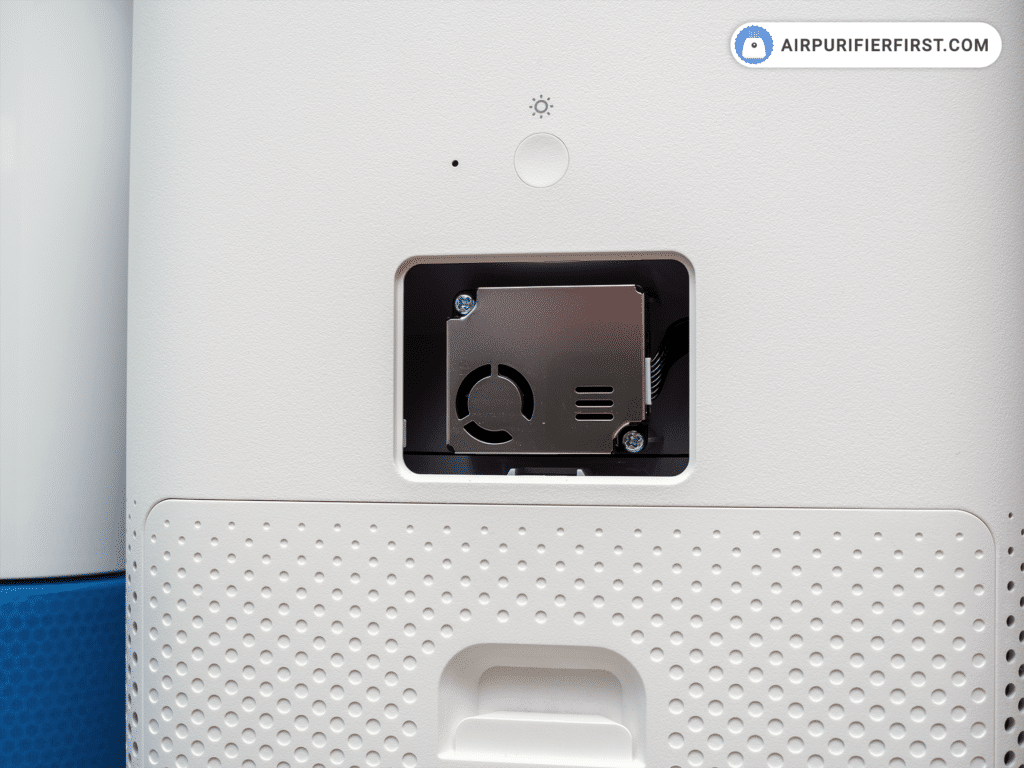
Blueair 211+ air purifier works without this option, while Xiaomi Mi 3H has a slightly upgraded version of the Air Quality Sensor and Indicator. The Air Quality Sensor is run by a motor placed on the back side of the air purifier. This motor works even when the device is OFF. The Indicator is located on the Display, right next to the control button, but you can also find it in the Xiaomi Smart App.
That’s not all. Xiaomi Mi 3h also has temperature and humidity sensors which are pretty accurate.
All these sensors are more than important because you get the real picture of the actual air you inhale and when is the moment to improve it.
Auto Mode
If an air purifier has Auto Mode, it will automatically switch speeds depending on the real-time air quality. Xiaomi Mi 3H has this option running simultaneously with the Air Quality Sensor.
Blueair 211+ air purifier doesn’t have this feature, but there is a next-generation Blueair model that comes with both Auto Mode and Air Quality Sensor. It’s the Blueair 211+ Auto.
Mi Home Smart App
From the title itself, you can conclude that this is an option reserved only for Xiaomi Mi 3H air purifiers. As a Smart appliance, Xiaomi can easily connect to a Mi Home Smart App, which allows you to gain more control over the air purifier. Some features, like manual mode, are available only through the Smart App. By being able to program your air purifier with this Smart App, you get complete remote control over the appliance.
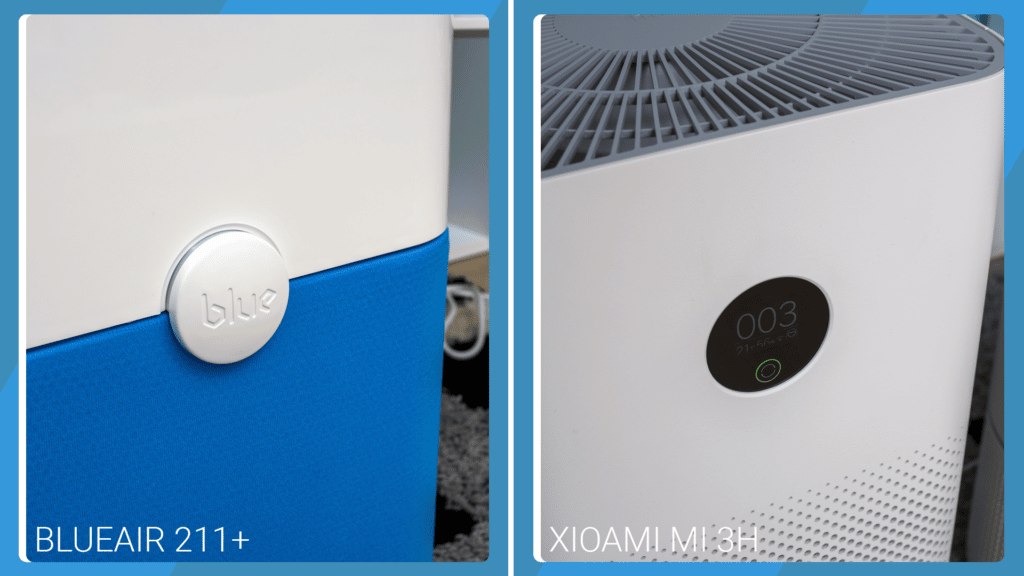
My favorite thing about this app is that it lets you program the air purifier to automatically turn ON/OFF, depending on the air quality/pollution level in real-time. You can also connect with your air purifier by using a voice command via Amazon Alexa or Google Assistant.
Filter Reset Indicator
Having a Filter Reset Indicator can be handy because it makes the job easier for you. This Indicator will light up at the moment your air purifier needs a filter replacement. That way, you won’t have to keep track of the date.
Regarding Xiaomi Mi 3H, you can take a sneak peek at the Smart App and see how much you have left before the filter replacement. But, you can also keep track by yourself since it is visible on the air purifier once you turn it ON.
Blueair has a pretty simple way of letting you know if you should replace the filters or not. The yellow colored Indicator will be a warning sign of an upcoming replacement. Once the Indicator turns red, you’ll know you are out of time and that filters need to be replaced ASAP.
Sleep Mode
The Sleep Mode is kind of an advanced feature, which Blueair 211+ is missing, as I said at the beginning.
However, Xiaomi Mi 3H has this feature, and it is working in your favor. That means that once the air purifier is set to Sleep Mode, the motor will adjust and decrease the speed level, lowering the noise level to 40.9 dBA. In addition to that, all the indicators on the air purifier will dim and make it practically invisible. This feature is perfect for those of you who would like to keep the air purifier in your bedroom during the nighttime.
Airflow
Having a similar rectangular shape means Xiaomi Mi 3H and Blueair 211+ have almost identical airflow.
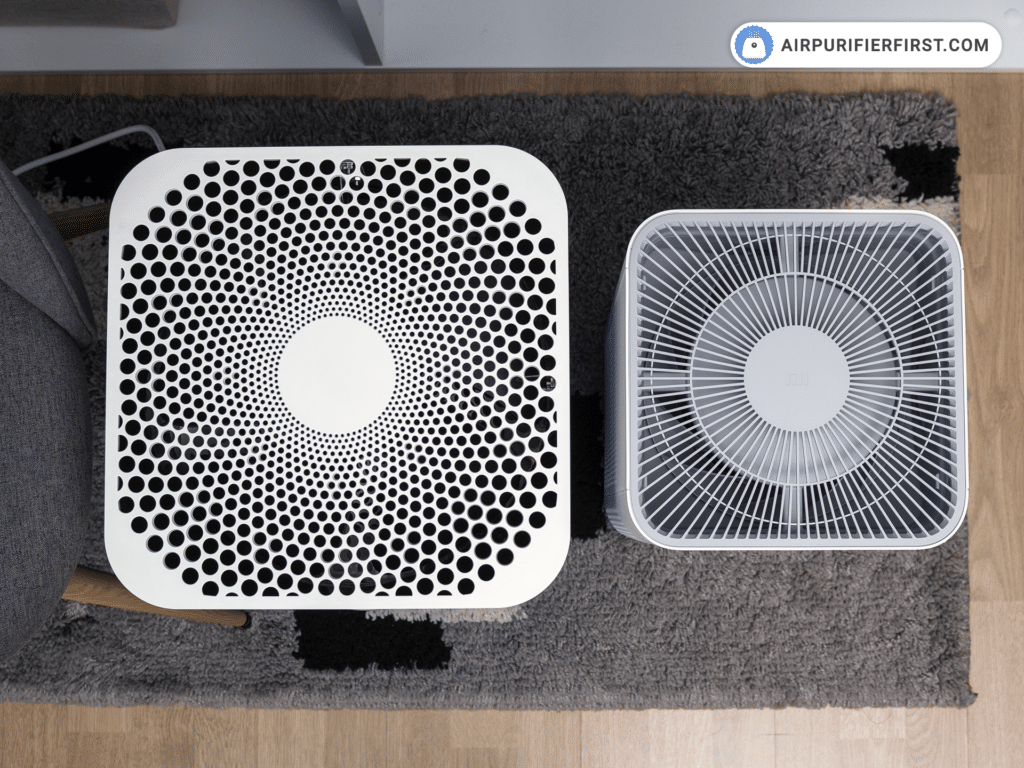
Both air purifiers have holes at the bottom part, but there is a slight difference. Xiaomi doesn’t have holes on the back side like Blueair. Once the air comes in, it runs through filters and goes out through the upper side holes.
Warranty
One of the important things for a buyer while thinking of a purchase is to be provided with a quality warranty period. That way, a potential user can be assured of full customer support by the manufacturer.
With this in mind, Blueair 211+ offers generous warranty coverage of 2 years. I recommend registering on their website right after purchasing the product, just to ensure the warranty is granted for real.
On the other hand, I am a bit disappointed by Xiaomi’s warranty coverage of only one year. Given the fact that Xiaomi is a serious and well-going company, this coverage is not enough, especially, knowing that Smart appliances with plenty of advanced features have more chances of being faulty.
Filtration Technology
Having a 3-stage filtration process is regular to both air purifiers, except for HepaSilent technology as a so-called fourth stage in Blueair 211+. As you can see, there is no True HEPA filter in the Blueair air purifier, as opposed to the Xiaomi Mi 3H.
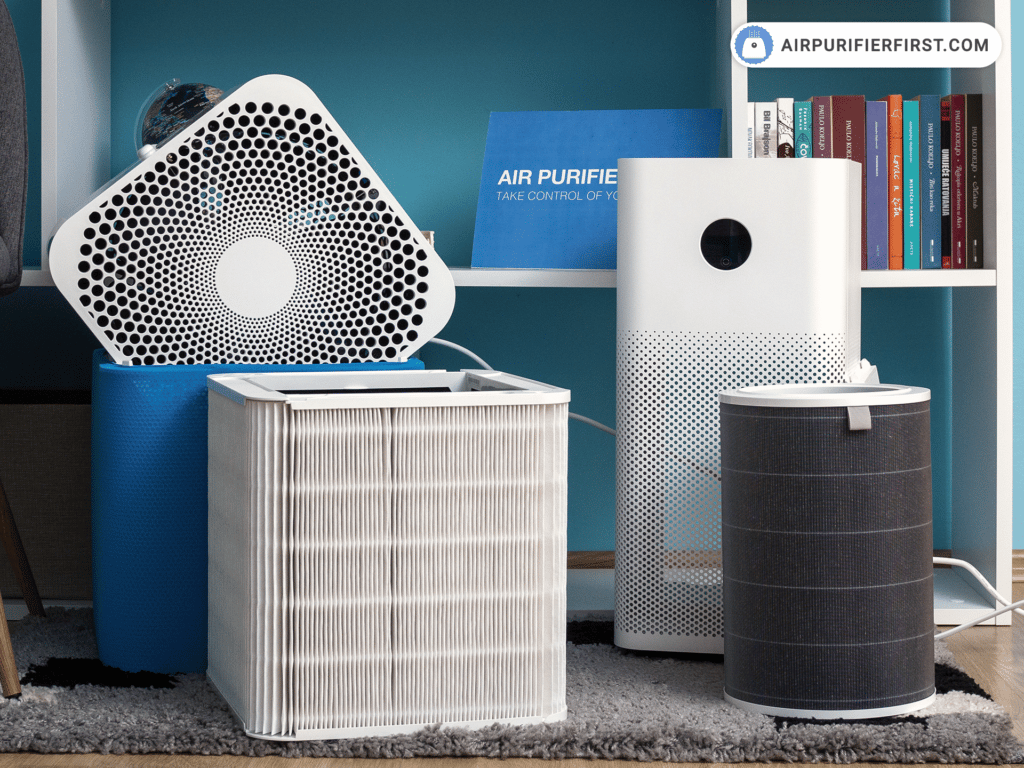
It is always the pre-filter that takes the first place in most air purifiers, and Blueair or Xiaomi is no exception. The difference is that Blueair pre-filter is a washable fabric that you can put onto the air purifier, plus it comes in various colors. On the other hand, Xiaomi has a pre-filter hooked to a True HEPA filter, and it’s not washable.
Speaking of the True HEPA filter, it comes as a second filter in order within Xiaomi Mi 3H. At the same time, Blueair has a similar filter as the second stage, the Particle Filter. Even though they are similar, the True HEPA filter is way more famous thanks to its proven efficiency.
The fibrous filter coated with carbon is a common third-stage filter in Xiaomi and Blueair. Not having a pellet-based filter is probably the main reason why these air purifiers are not so good at odor neutralizing.
Overall, both air purifiers have shown great performance and reliability through all the testing phases. This is why I can say that filters in each air purifier are provenly good. Even more so.
How To Replace Filter On Both These Devices?
How long will any air purifier last depends on how well you maintain it. If you clean the filters regularly and replace them when needed, your air purifier will be able to deliver as promised by the manufacturer.
Generally speaking, Xiaomi has more durable filters which need to be replaced once or twice a year, depending on their condition. Blueair recommends a replacement every six months.
My recommendation, clean your air purifier’s pre-filter at least twice a month if you want your device to last.
As for the replacement how-to, I have it all explained in separate reviews. Check it out, it’s not that big of a deal, I promise.
Noise Tests
Given the fact that Blueair 211+ is quite a simple air purifier, it has only three fan speeds without the Sleep Mode feature. On the contrary, Xiaomi Mi 3H has four fan speeds, plus the Sleep Mode and the manual mode.
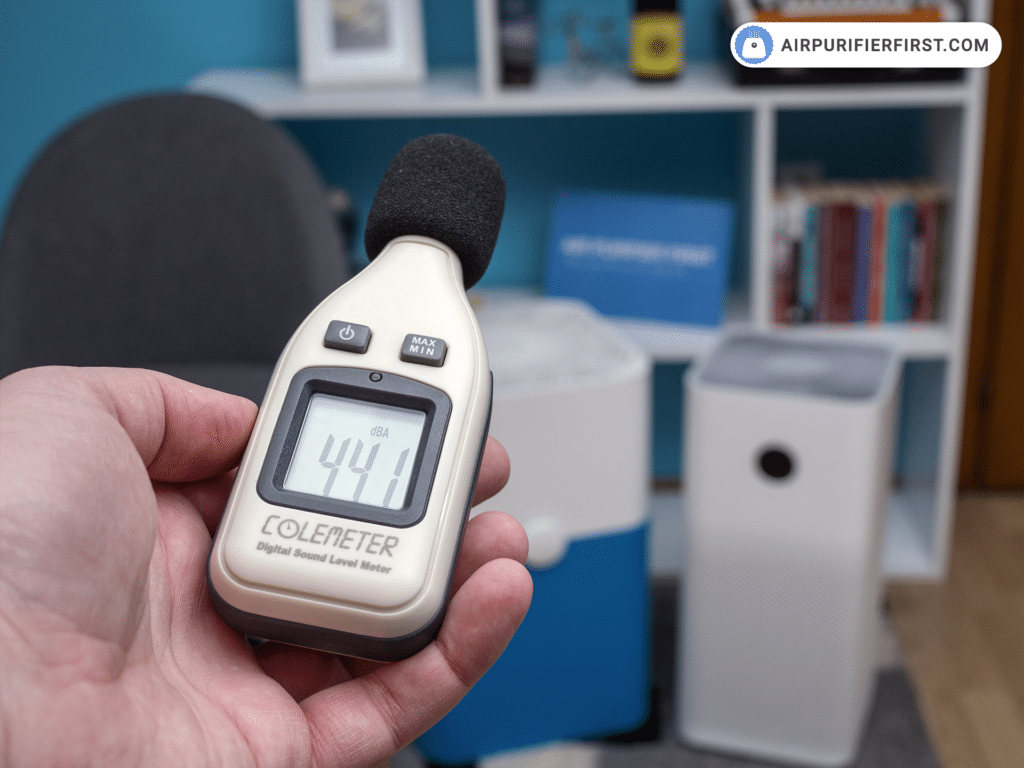
I don’t even mind that Xiaomi releases a bit more noise on the peak speed level, it is still far less than the noise Blueair produces. Blueair has those vibrations that can be pretty annoying, while Xiaomi’s motor runs more fluidly.
| Product | Noise Range (dBA) |
|---|---|
| Xiaomi Mi 3H | 40.9 – 65.4 dBA |
| Blueair 211+ | 43.9 – 59.7 dBA |
However, while running at maximum speed, Xiaomi is not only louder than Blueair but also far louder than it should be, in my opinion. But, hey, we all know that any air purifier can give its best only while on max speed, and these two are no exception. Xiaomi Mi 3H has that contrasting function, a true sleeper during the nighttime and a roarer during the day.
Performance Tests
As I already mentioned in the intro, even though Xiaomi Mi 3H and Blueair 211+ air purifiers are of similar medium size, they can cover larger spaces. Xiaomi can cover up to 540 sq. ft. room size, while Blueair can handle up to 484 sq. ft.
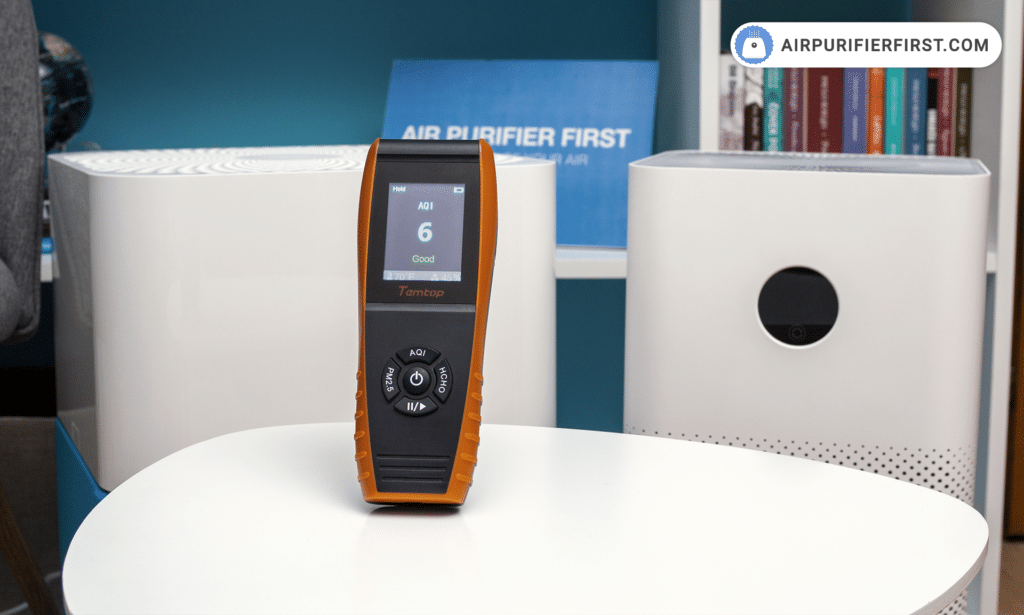
Thanks to these similarities, it was easier for me to test both appliances and get actual performance results. Each air purifier was tested separately for 60 minutes while running at max speed.
The only thing I resent about both air purifiers is that the odor neutralization is at a pretty low level due to the performance of carbon filters.
320 sq. ft. Room Tests
In a 320 sq. ft. room size, each air purifier has shown awesome results and is pretty much alike. While Xiaomi Mi 3H managed to improve the air quality by 95%, Blueair 211+ did the same thing but with a 96% improvement.
320 sq. ft. Room
* Data measuring time is 60 minutes.
560 sq. ft. Room Tests
As for the second test, I decided to pick a little larger room to see how good these air purifiers really are. One could say it could be too much to handle, but Xiaomi and Blueair did not disappoint me at all. The first one I tested, the Xiaomi Mi 3H, improved the air quality by 90%. The second one, Blueair 211+, was quite a surprise, with a 92% improvement.
560 sq. ft. Room
* Data measuring time is 60 minutes.
As you can see for yourself, there is nothing to complain about. The results met the expectations.
Operating Costs
Even though Blueair 211+ has a more powerful motor (61W) than Xiaomi Mi 3H (38W), it also means that Blueair has far greater power consumption. That being said, if you leave both air purifiers running on top speed 24/7 for a whole month, by the end of the month, you will have to pay approximately 3.4$ bill for Xiaomi and 4.3$ for Blueair.
| Product | Wattage Range (W) |
|---|---|
| Xiaomi Mi 3H | 0.9 – 39W |
| Blueair 211+ | 0.2 – 49W |
Given the fact that Blueair’s filter needs to be replaced more often than Xiaomi, it will cost you more than expected at first.
As you can see for yourself, Xiaomi Mi 3H turns out to be more affordable annually than Blueair 211+.
Which One Does It Better?
No matter how easy it seemed to you, I can assure you that this comparison was not that easy to handle. From the very first minute, I had a thing for Blueair, thinking it might be the winner, due to some personal preferences. However, all the while, through various tests I conducted, Xiaomi turned out to be a way better solution. Thanks to many advanced features and most of all, affordability, Xiaomi mi 3H has won in this comparison.
However, that doesn’t mean that Blueair 211+ is no good, on the contrary.
Just in case, if you need just a little more details on each air purifier, you can find them in the independent reviews I posted previously on my website.
As always, I would be glad to answer any additional questions you may have. So, don’t hesitate and leave me a comment below.
Leave a Reply